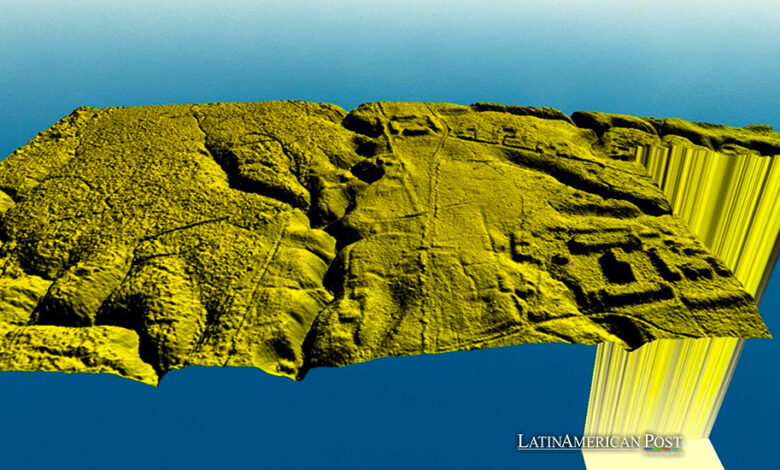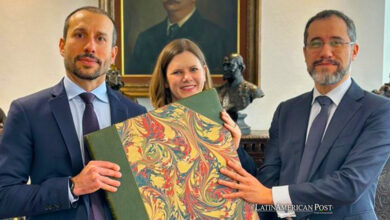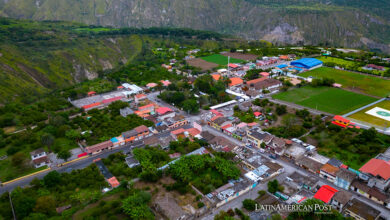Ecuador’s Unnamed Ancient City: A Pre-Hispanic Marvel Hidden in the Amazon

Deep within Ecuador’s Amazon lies an unnamed, pre-Hispanic city, a significant archaeological find that suggests a developed society existed 2,500 years ago, challenging historical perceptions of the region.
Unveiling Ecuador’s Ancient Marvel
In the lush greenery of Ecuador’s Amazon, a remarkable discovery has been made – a large, unnamed pre-Hispanic city, evidencing for the first time a developed society exists in this jungle territory. Dating back 2,500 years, this city once boasted about 7,400 structures, including mounds, plazas, and an extensive network of roads.
According to Catalina Tello, director of the National Institute of Cultural Heritage (INPC), these architectural structures reveal a city complete with streets, plazas, residential areas, and ceremonial spaces, indicating a society with significant political, social, and economic organization. This city, sprawling over 300 square kilometers in the Morona Santiago province near the upper Upano River, could be even more significant, as studies using advanced technology over an additional 600 kilometers are still being analyzed.
Although not new, the discovery has recently gained attention due to a publication in the scientific journal Science, discussing a “lost city.” Knowledge of such structures in the high Amazon of Ecuador dates back to the 1980s. In the 1990s, the French Institute of Andean Studies conducted field explorations revealing a large urban settlement.
A significant breakthrough came in 2015 when the INPC launched a research program using LiDAR technology. This light detection and ranging or laser imaging detection and ranging technique uses laser points to generate images of architectural structures, even those hidden under dense vegetation.
A Protection Polygon
In this area, the natural landscape of the Amazon is marked by large structures that, upon closer inspection, resemble pyramids and tolas. Tello notes that much of the 300-kilometer area is inhabited by the Shuar and Achuar indigenous communities and includes agricultural lands. Fortunately, there hasn’t been extensive exploitation of the territory that would destroy these archaeological sites.
To protect this city, which is almost adjacent to the Sangay National Park, crowned by the Sangay volcano, the INPC plans to work with local inhabitants and governments this year to outline a protection polygon. This effort will involve cartography to define the various land uses of this great city, which, as Tello emphasized, “has no name.”
Unraveling the Mysteries
Regarding the inhabitants of this ancient city, several hypotheses are being considered: Did they disappear due to the eruption of the neighboring Sangay volcano, or were they forced to flee due to climate harshness? Tello mentions that initial excavations have uncovered walls and ceramics, but the soils are still under study.
Concerning illegal excavators (huaqueros), Tello acknowledges that there has been some archaeological illicit exploitation in the Amazon. However, she believes a wave of unlawful excavations is unlikely, given the region’s difficult access and the solid territorial control of empowered local communities.
A Century of Research Ahead
The mysteries surrounding this splendid city are vast. Tello estimates there’s enough for a century of research to answer questions about who lived there, their lifestyle, diet, attire, how they died, and what diseases they had. The moment to begin answering these questions has just begun.
Moreover, only data from 300 kilometers have been analyzed so far, with the remaining 300 kilometers still pending review using LiDAR technology.
This discovery has shattered the myth that no large societies existed in the Amazon. Tello highlights the importance of integrating archaeological research with indigenous peoples’ traditions in the Upano area. These communities possess oral traditions, clothing, and agricultural practices inherited over thousands of years, crucial to understanding the region’s historical context.
Also read: Mexican Museum Displays Skulls of Characters Made with Indigenous art and Swarovski Crystals
The uncovering of this unnamed ancient city in Ecuador’s Amazon adds a new chapter to the history of pre-Hispanic societies in South America and opens up a wealth of possibilities for further archaeological and anthropological research. This discovery challenges long-held views and offers a unique opportunity to explore and understand the Amazonian region’s complex history and cultural heritage.




